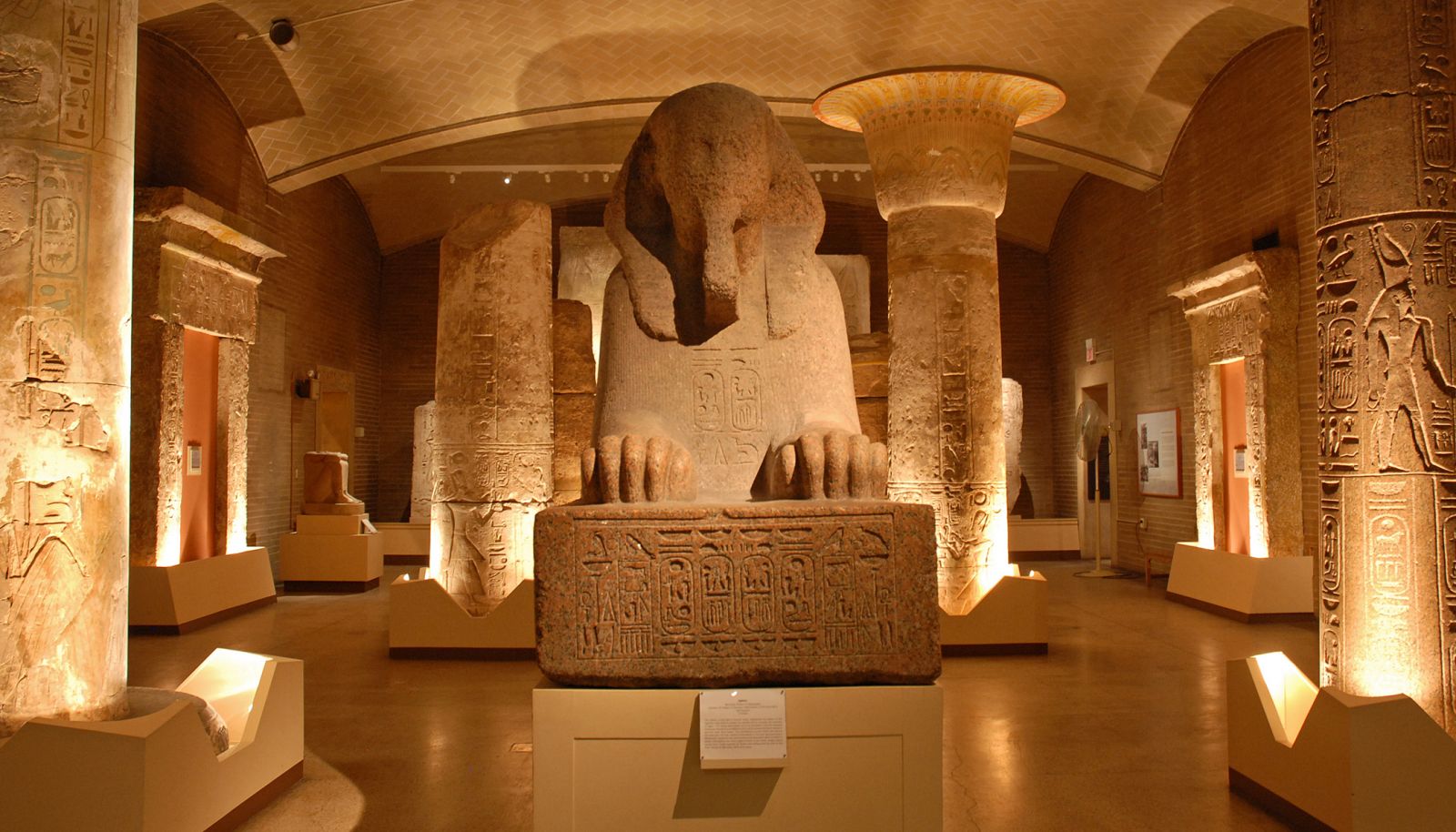6 phút từ vựng: A history of the world in 100 objects
Tìm hiểu Lịch sử thế giới qua 100 hiện vật với 6 minutes English
Chủ đề: A history of the world in 100 objects Nghe bài hội thoại ở đây
Nghe bài hội thoại ở đây
Transcript:
Dan: Hello and welcome to this week's 6 Minute English. I'm Dan and today I'm joined by Kate.
Kate: Hi Dan.
Dan: Hi Kate. Now in today's programme we’re talking about a new exhibition at the British Museum in London, which is attempting to define the whole of hu man history through 100 objects.
Kate: Yes, well from stone-age tools to the modern credit card, the museum says certain key objects can demonstrate man's development up until the present day – in particular our important advances in art, technology, religion, warfare and trade.
Dan: So Kate, this week's question for you is: How many objects are there in the whole of the British Museum collection? Is it:
a) 8 million
b) 11 million
c) 13 million
Kate: That's a hard one. I've got absolutely no idea. But I'm going to go for c, the largest number: 13 million.
Dan: Well, we'll see if you're right at the end of the programme.
Kate: Now the museum has spent four years organising the exhibition. So Dan how did they choose the final 100 objects that are being put on display?
Dan: Well, the museum's director, Neil MacGregor, says that they've chosen the objects that give us an idea of how different cultures have interacted; that is, how they worked together or formed relationships.
Kate: So let's have a listen to the first extract as he explains how scientific developments have changed the significance of certain objects. How does he describe the effect that scientific discoveries have had on our understanding?
Extract 1
Most of us, I think, if we come back to a museum that we visited as a child, have the
sense that we've changed enormously, while the things have remained serenely the same.
But of course they haven't. Thanks to constant research into new scientific techniques,
what we can know about them is constantly growing.
Kate: OK, well he says that what we know about the objects is constantly growing. The word constant here means continuous or frequent. So to say that what we kn ow is constantly growing means that it is always expanding or getting bigger in size.
Dan: He also said that we might think things remain serenely the same. Serene means calm, tranquil or steady. So here he means we think things have steadily remained the same. The impact of science on our understanding of historical objects is demonstrated in one of the first pieces in the collection, an ancient Egyptian mummy – the preserved body of ancient Egyptian priest, which has been wrapped in linen in preparation for the afterlife.
Kate: In the next clip we're going to hear from a specialist from the museum's ancient Egypt and Sudan department as he explains how new analysis of mummies can provide information on trade in the ancient world, and show that cultures
interacted far more than we originally thought.
Dan: He uses the word mummification, which means the process of preserving the bodies as mummies, by wrapping them in strips of material. And also the term
chemical composition. What does he mean by that Kate?
Kate: Well, the chemical composition is the basic make-up of chemicals in a particular object. Let's have a listen; how do the mummies help us to understand trading in the ancient world?
Extract 2:
We can also look at substances used in mummification; we can test them; we can look at
the chemical composition of them; find out what materials were being used; maybe now
we can look at where they were coming from. We can compare these chemical make-ups
with substances found in different parts of the Mediterranean, and begin to reconstruct
the trading networks that supplied these things to Egypt.
Dan: So an object that we thought was uniquely Egyptian – a mummy – can give us information about interaction across the ancient world by analysing what materials are being used and where they've come from. What these objects show is that we share more history than we originally thought.
Kate: We also heard the words reconstruct and network. To reconstruct something means to rebuild it or recreate it.
Dan: And a network means a system of connections and contacts, in this context, trading contacts in the ancient world.
Kate: So as our knowledge of the world gets better, we are gaining a deeper understanding of how cultures have worked together to get to where we are today.
Dan: The Egyptian writer Ahdaf Soueif describes the history of the world as a 'joint project'. Which area of history does she say she'd focus on to help people understand their relationship with each other?
Extract three:
If I could decree a universal education programme I would make every child in the
world learn a brief history of the entire world that focussed on the common ground. It
would examine how people perceive their relationship to each other, to the planet, and to
the universe.
Dan: She said she'd focus on the common ground of history. Common ground usually means an area of shared understanding. So by examining the common
ground of cultures and history, people could gain a wider understanding of the history of the world.
Kate: Oh it's all fascinating stuff, but we’re almost out of time unfortunately, so let’s go over some of the vocabulary we’ve come across today:
interact
constant
serenely
mummy
mummification
reconstruct
network
common ground
Dan: And let's go back to today's question. I asked you Kate how many objects there are in the whole of the British Museum collection? Is it:
d) 8 million
e) 11 million
f) 13 million
Kate: And I took a wild guess at c, 13 million.
Dan: And again you'd be exactly right. Thirteen million objects in the whole of the British Museum.
Kate: Oh, you'll have to start making your questions a bit harder Dan.
Dan: Well, we'll see about that. So from all of us here at BBC Learning English, thanks very much for listening, and goodbye!
Kate: Goodbye!
Tổng hợp từ vựng mới trong bài
Chủ đề: A history of the world in 100 objects

Transcript:
Dan: Hello and welcome to this week's 6 Minute English. I'm Dan and today I'm joined by Kate.
Kate: Hi Dan.
Dan: Hi Kate. Now in today's programme we’re talking about a new exhibition at the British Museum in London, which is attempting to define the whole of hu man history through 100 objects.
Kate: Yes, well from stone-age tools to the modern credit card, the museum says certain key objects can demonstrate man's development up until the present day – in particular our important advances in art, technology, religion, warfare and trade.
Dan: So Kate, this week's question for you is: How many objects are there in the whole of the British Museum collection? Is it:
a) 8 million
b) 11 million
c) 13 million
Kate: That's a hard one. I've got absolutely no idea. But I'm going to go for c, the largest number: 13 million.
Dan: Well, we'll see if you're right at the end of the programme.
Kate: Now the museum has spent four years organising the exhibition. So Dan how did they choose the final 100 objects that are being put on display?
Dan: Well, the museum's director, Neil MacGregor, says that they've chosen the objects that give us an idea of how different cultures have interacted; that is, how they worked together or formed relationships.
Kate: So let's have a listen to the first extract as he explains how scientific developments have changed the significance of certain objects. How does he describe the effect that scientific discoveries have had on our understanding?
Extract 1
Most of us, I think, if we come back to a museum that we visited as a child, have the
sense that we've changed enormously, while the things have remained serenely the same.
But of course they haven't. Thanks to constant research into new scientific techniques,
what we can know about them is constantly growing.
Kate: OK, well he says that what we know about the objects is constantly growing. The word constant here means continuous or frequent. So to say that what we kn ow is constantly growing means that it is always expanding or getting bigger in size.
Dan: He also said that we might think things remain serenely the same. Serene means calm, tranquil or steady. So here he means we think things have steadily remained the same. The impact of science on our understanding of historical objects is demonstrated in one of the first pieces in the collection, an ancient Egyptian mummy – the preserved body of ancient Egyptian priest, which has been wrapped in linen in preparation for the afterlife.
Kate: In the next clip we're going to hear from a specialist from the museum's ancient Egypt and Sudan department as he explains how new analysis of mummies can provide information on trade in the ancient world, and show that cultures
interacted far more than we originally thought.
Dan: He uses the word mummification, which means the process of preserving the bodies as mummies, by wrapping them in strips of material. And also the term
chemical composition. What does he mean by that Kate?
Kate: Well, the chemical composition is the basic make-up of chemicals in a particular object. Let's have a listen; how do the mummies help us to understand trading in the ancient world?
Extract 2:
We can also look at substances used in mummification; we can test them; we can look at
the chemical composition of them; find out what materials were being used; maybe now
we can look at where they were coming from. We can compare these chemical make-ups
with substances found in different parts of the Mediterranean, and begin to reconstruct
the trading networks that supplied these things to Egypt.
Dan: So an object that we thought was uniquely Egyptian – a mummy – can give us information about interaction across the ancient world by analysing what materials are being used and where they've come from. What these objects show is that we share more history than we originally thought.
Kate: We also heard the words reconstruct and network. To reconstruct something means to rebuild it or recreate it.
Dan: And a network means a system of connections and contacts, in this context, trading contacts in the ancient world.
Kate: So as our knowledge of the world gets better, we are gaining a deeper understanding of how cultures have worked together to get to where we are today.
Dan: The Egyptian writer Ahdaf Soueif describes the history of the world as a 'joint project'. Which area of history does she say she'd focus on to help people understand their relationship with each other?
Extract three:
If I could decree a universal education programme I would make every child in the
world learn a brief history of the entire world that focussed on the common ground. It
would examine how people perceive their relationship to each other, to the planet, and to
the universe.
Dan: She said she'd focus on the common ground of history. Common ground usually means an area of shared understanding. So by examining the common
ground of cultures and history, people could gain a wider understanding of the history of the world.
Kate: Oh it's all fascinating stuff, but we’re almost out of time unfortunately, so let’s go over some of the vocabulary we’ve come across today:
interact
constant
serenely
mummy
mummification
reconstruct
network
common ground
Dan: And let's go back to today's question. I asked you Kate how many objects there are in the whole of the British Museum collection? Is it:
d) 8 million
e) 11 million
f) 13 million
Kate: And I took a wild guess at c, 13 million.
Dan: And again you'd be exactly right. Thirteen million objects in the whole of the British Museum.
Kate: Oh, you'll have to start making your questions a bit harder Dan.
Dan: Well, we'll see about that. So from all of us here at BBC Learning English, thanks very much for listening, and goodbye!
Kate: Goodbye!
Tổng hợp từ vựng mới trong bài
- interact
to work together or form relationships
- constant
continuous or frequent
- serene
calm, tranquil or steady
- mummy
a preserved body, which has been wrapped in linen in preparation for the afterlife
- mummification
the process of preserving bodies as mummies
- reconstruct
to rebuild or recreate something
- network
a system of connections and contacts
- common ground
an area of shared understanding











Bình luận